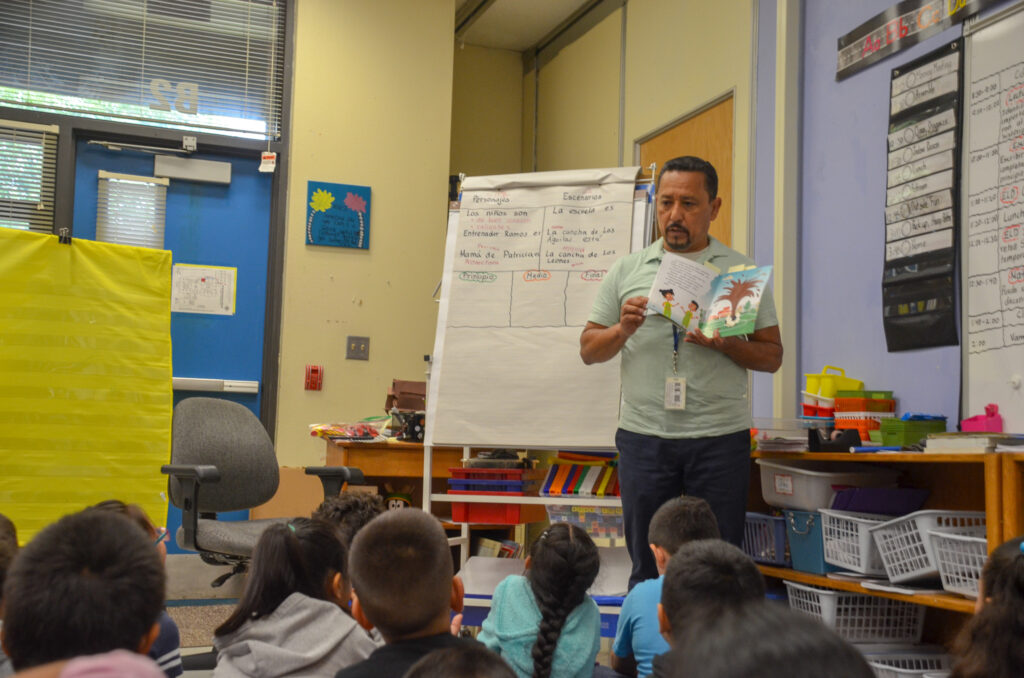Teacher Alvato Centeno reads to a classroom of first graders in Salem.
(Rachel Alexander/Salem Reporter)
Hundreds of schools across the state have begun spending their portions of a historic investment to turn around chronically low reading proficiency among Oregon kids.
Most of the more than 250 schools that qualified for $90 million in statewide literacy funding have begun spending their share of the money, state education leaders told lawmakers Thursday at a meeting of the House Committee on Education. In the fall, schools will begin to report on their progress implementing new reading programs, materials and staff.
The Early Literacy Success Initiative passed by the Legislature in 2023 directed more than $120 million to schools and community groups for new elementary reading curriculum, reading tutors and after-school reading programs, and to training teachers in reading instruction based on a large body of cognitive and neuroscience showing how the brain learns to read. Many students across Oregon and the country have been taught in ways that do not reflect all of that research, and a nationwide reckoning with this has been underway since 2017 following reporting by investigative journalist Emily Hanford.
SPECIAL REPORTS: Oregon fails to turn page on reading
Many teachers in Oregon and nationwide have also been trained at universities in reading instructional methods that do not reflect the science. To address this, Gov. Tina Kotek created an Early Literacy Educator Preparation Council that will propose to lawmakers in June changes to teacher licensure that require candidates demonstrate a knowledge of reading science.
Over the past 25 years, nearly two in five Oregon fourth graders and one in five eighth graders have scored “below basic” on the National Assessment of Educational Progress, often referred to as the nation’s report card. That means they struggle to read and understand simple words.
Most schools are using the extra money to help pay for staff including literacy coaches helping teachers, reading interventionists, specialists and tutors, said Pooja Bhatt, Kotek’s director of education initiatives. Bhatt said the money distributed so far is paying for around 400 full-time staff in schools statewide who are focused on improving reading proficiency. Money is also available for new curriculum aligned with reading science. According to Bhatt, about 70% of Oregon schools are using one of the 15 reading curriculum on the State Board of Education’s approved materials list, and about 30% are not.
Oregon’s strong tradition of “local control” means teachers, administrators and locally elected school board members decide what curricula to use. The education department doesn’t ban schools from choosing teaching materials not on the list.
Jennifer Patterson, assistant superintendent of the education department’s Office of Teaching and Learning, said the state is working with those 30% of districts to move toward curriculum on the approved list. She said the department is also helping districts that are using grant funding to buy new curriculum navigate a newly flooded marketplace of materials touting the “science of reading.”
“Over the last few years there’s been quite a big explosion, if you will, of materials – supplemental silver bullets, I like to call them – that have really overwhelmed districts,” she said.
GET THE MORNING HEADLINES DELIVERED TO YOUR INBOX
The post Historic reading investment, updates to teacher licensure and literacy training underway appeared first on Oregon Capital Chronicle.

